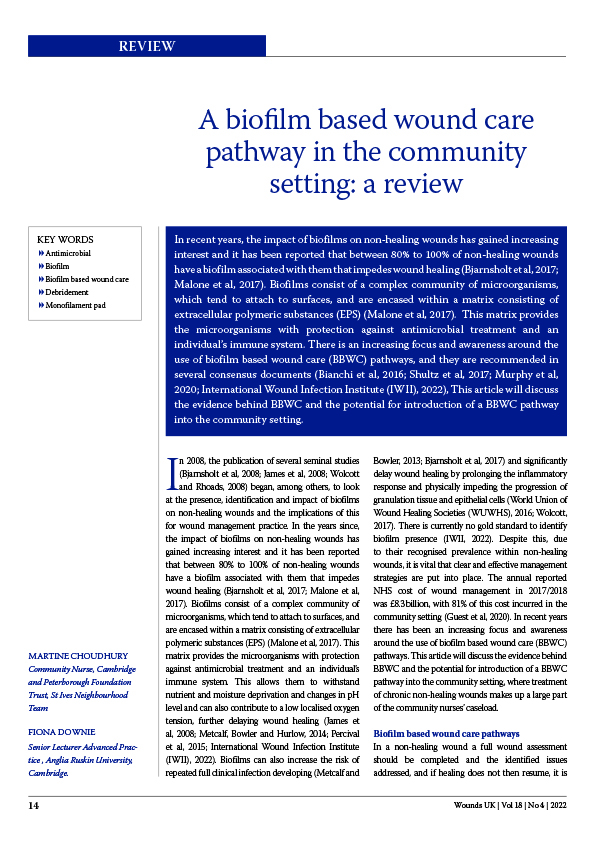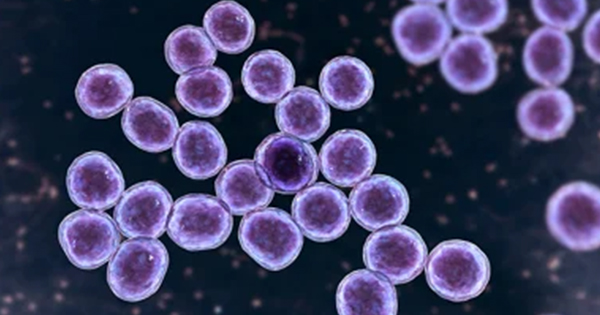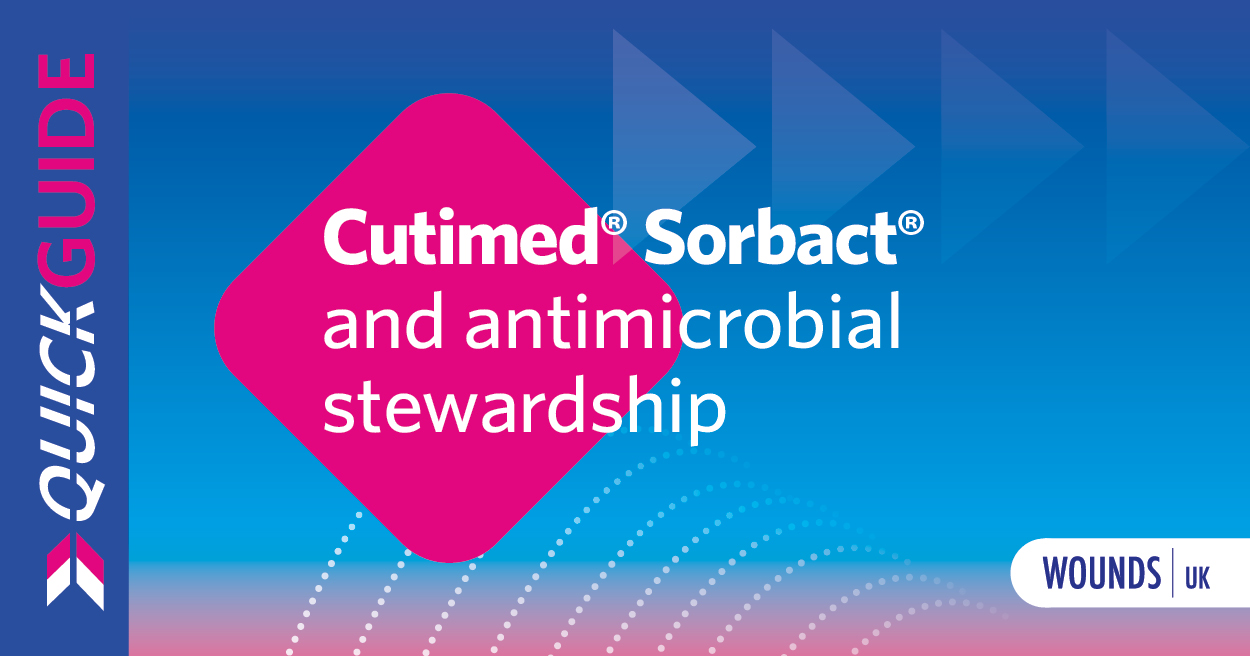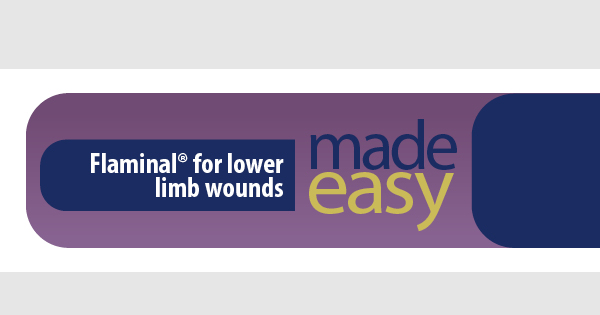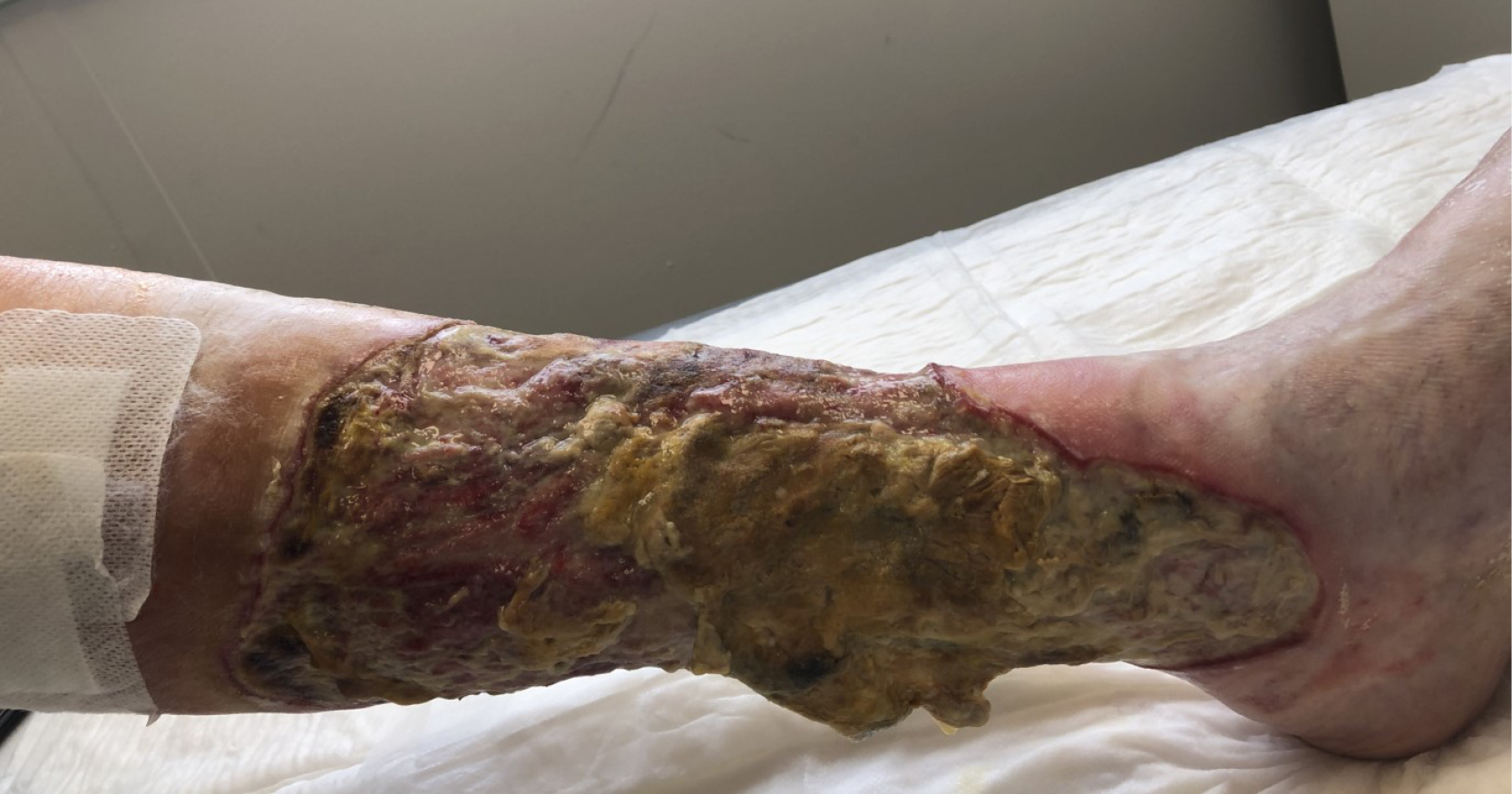In recent years, the impact of biofilms on non-healing wounds has gained increasing interest and it has been reported that between 80% to 100% of non-healing wounds have a biofilm associated with them that impedes wound healing (Bjarnsholt et al, 2017; Malone et al, 2017). Biofilms consist of a complex community of microorganisms, which tend to attach to surfaces, and are encased within a matrix consisting of extracellular polymeric substances (EPS) (Malone et al, 2017). This matrix provides the microorganisms with protection against antimicrobial treatment and an individual’s immune system. There is an increasing focus and awareness around the use of biofilm based wound care (BBWC) pathways, and they are recommended in several consensus documents (Bianchi et al, 2016; Shultz et al, 2017; Murphy et al, 2020; International Wound Infection Institute (IWII), 2022), This article will discuss the evidence behind BBWC and the potential for introduction of a BBWC pathway into the community setting.

